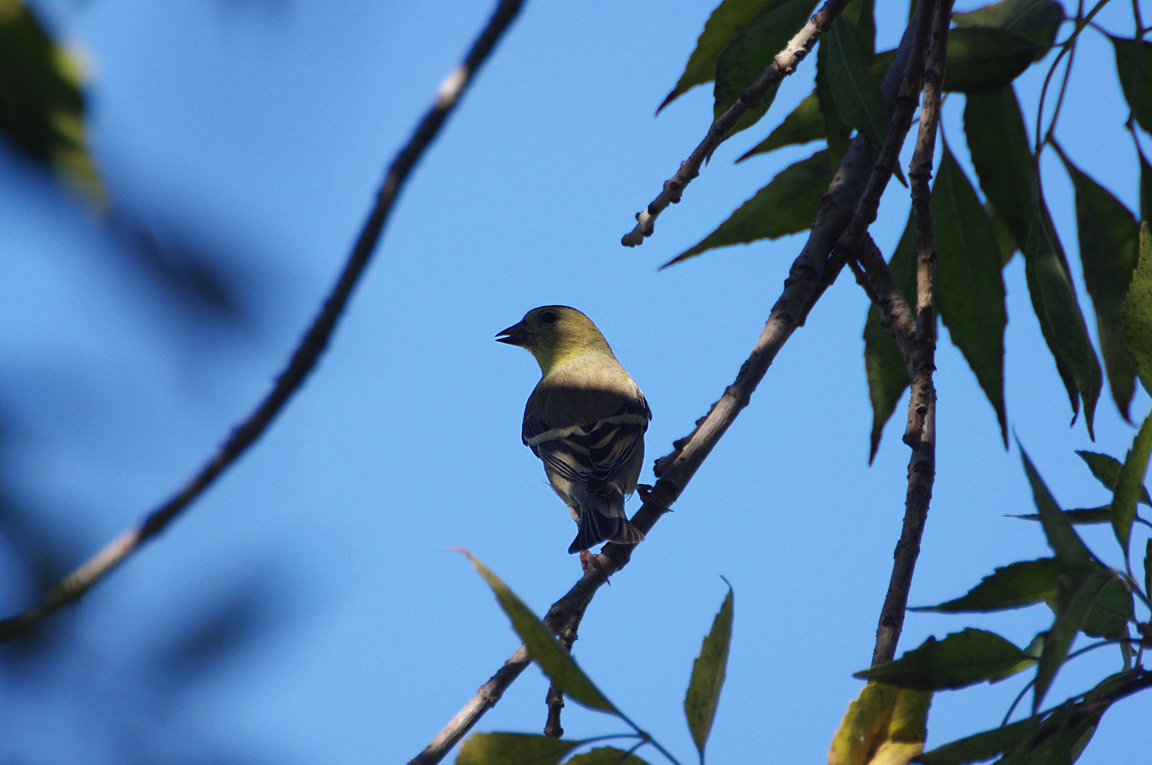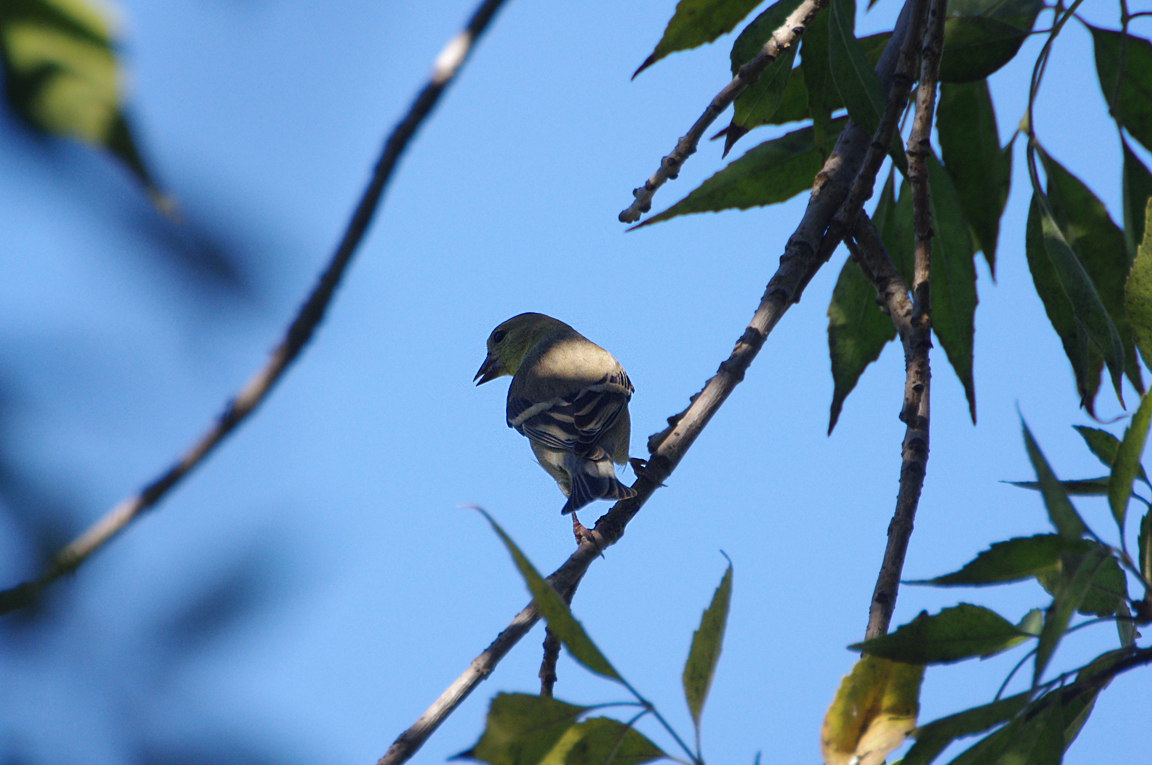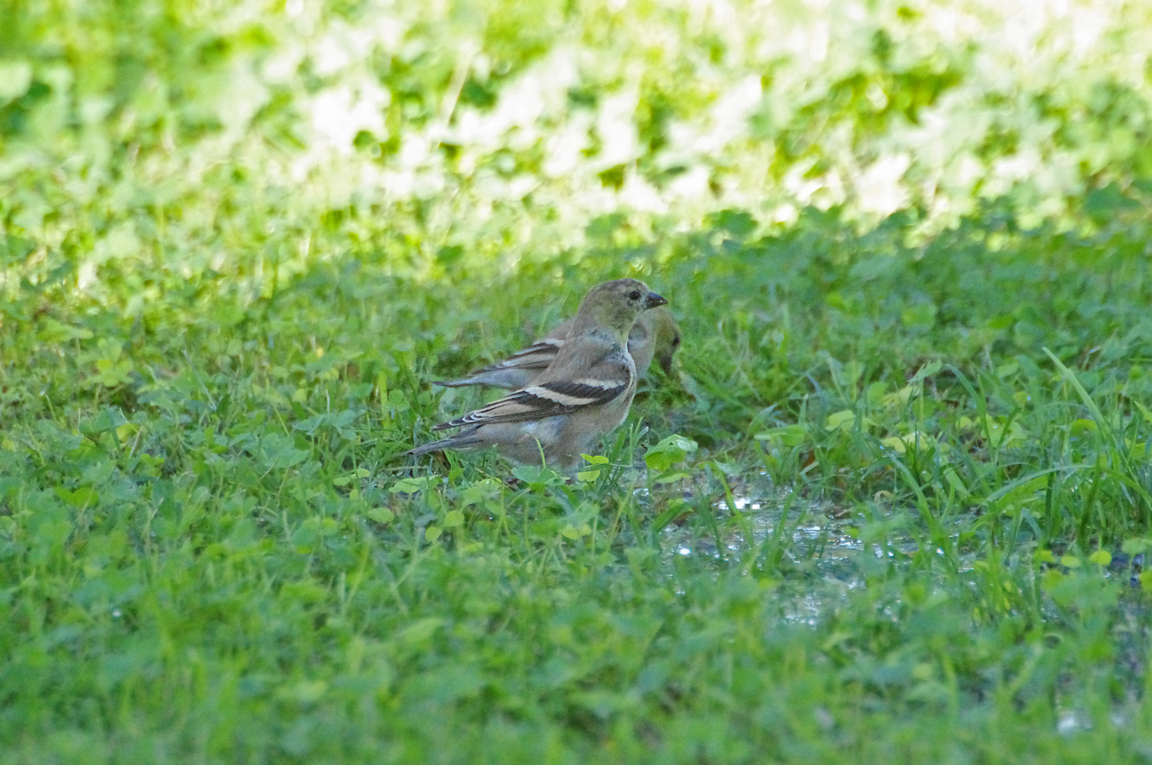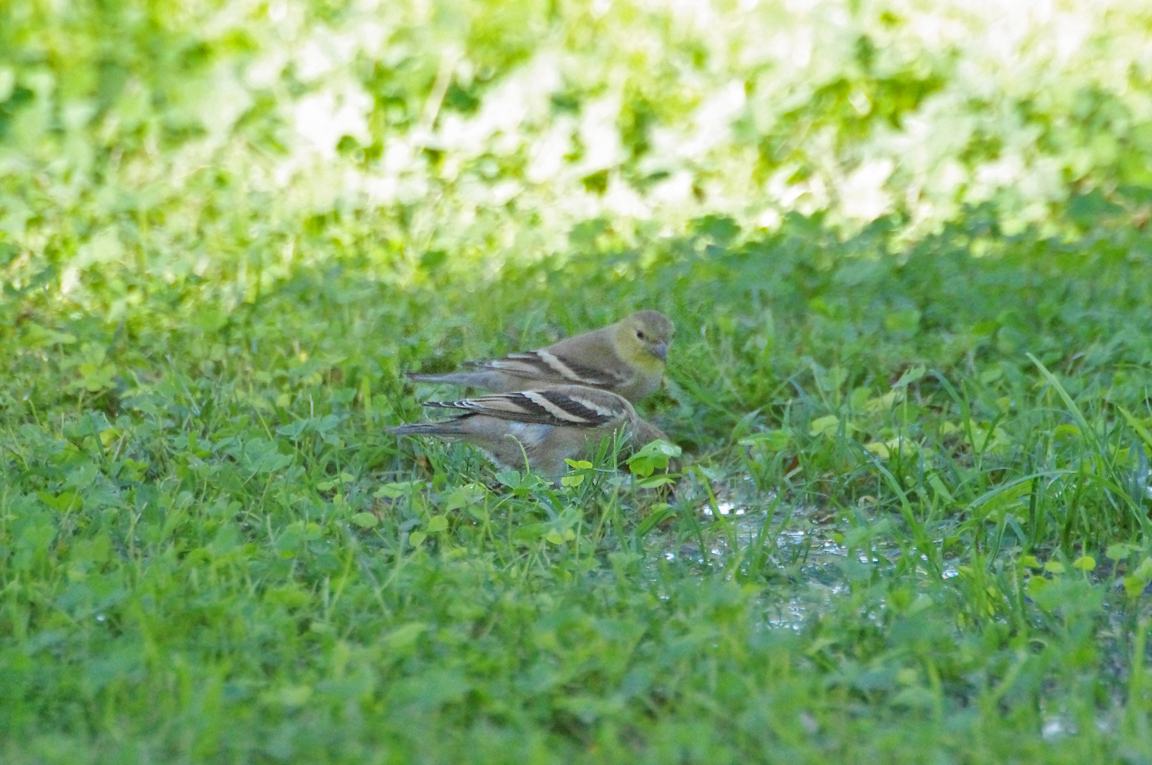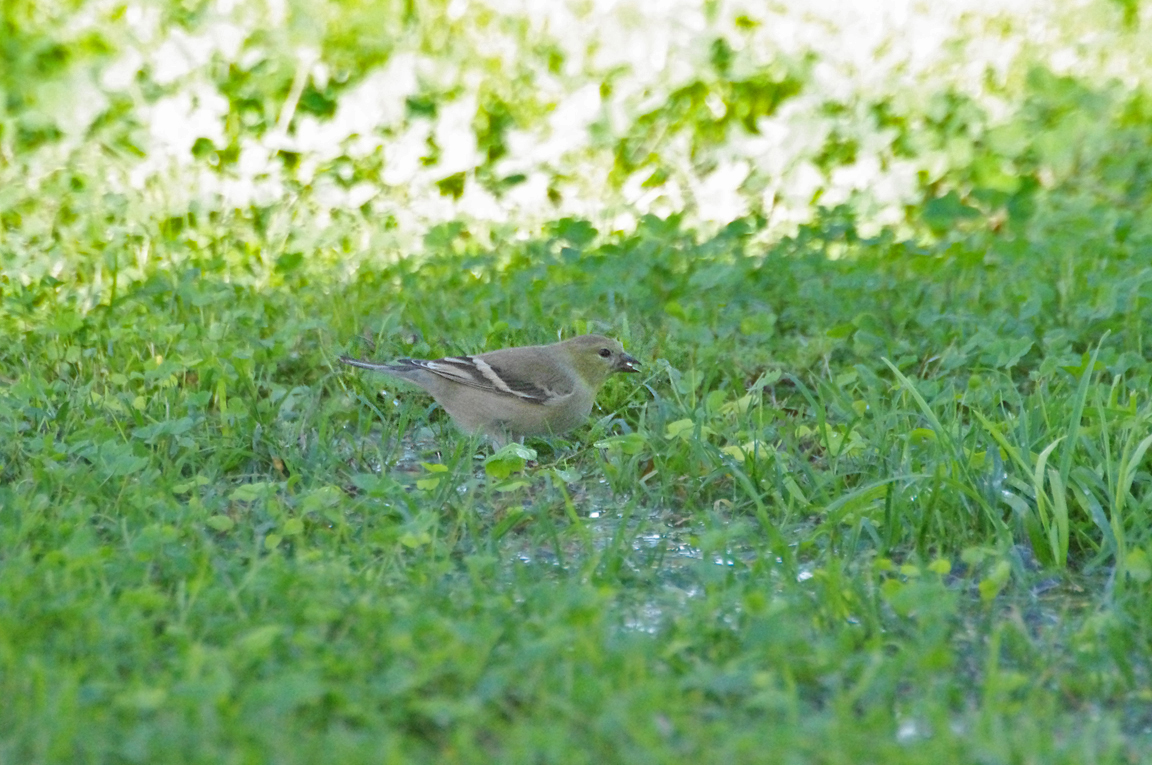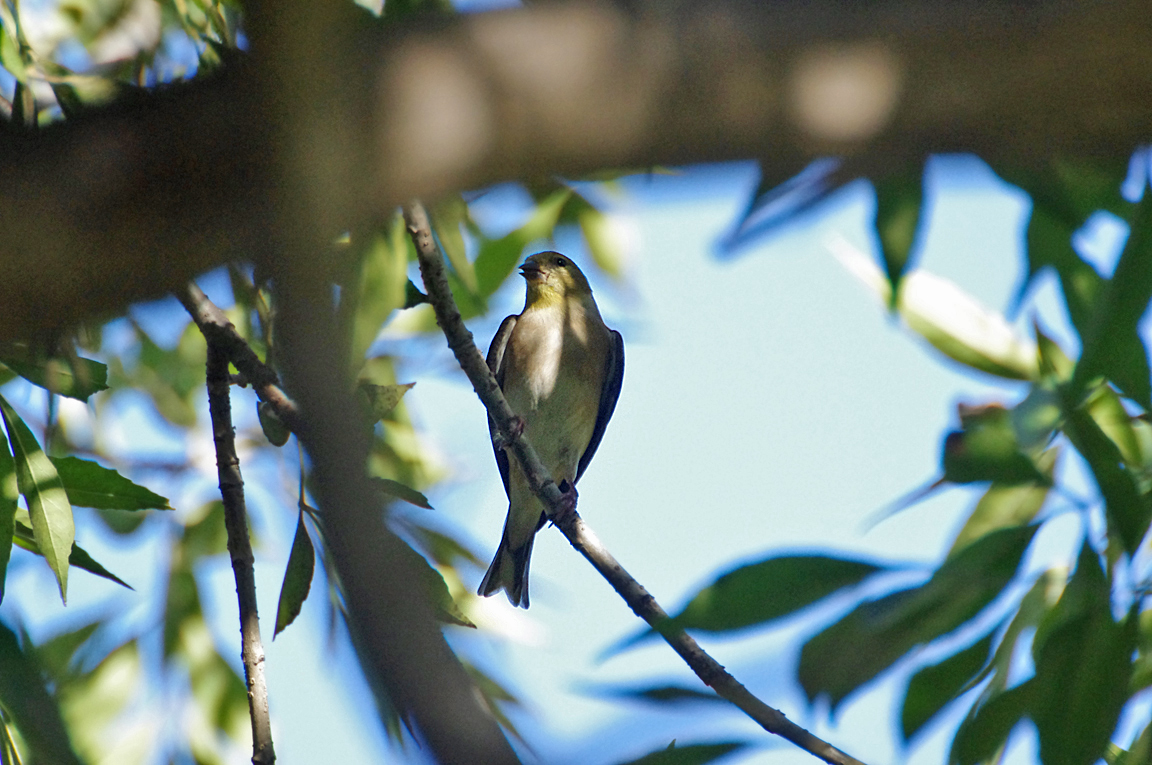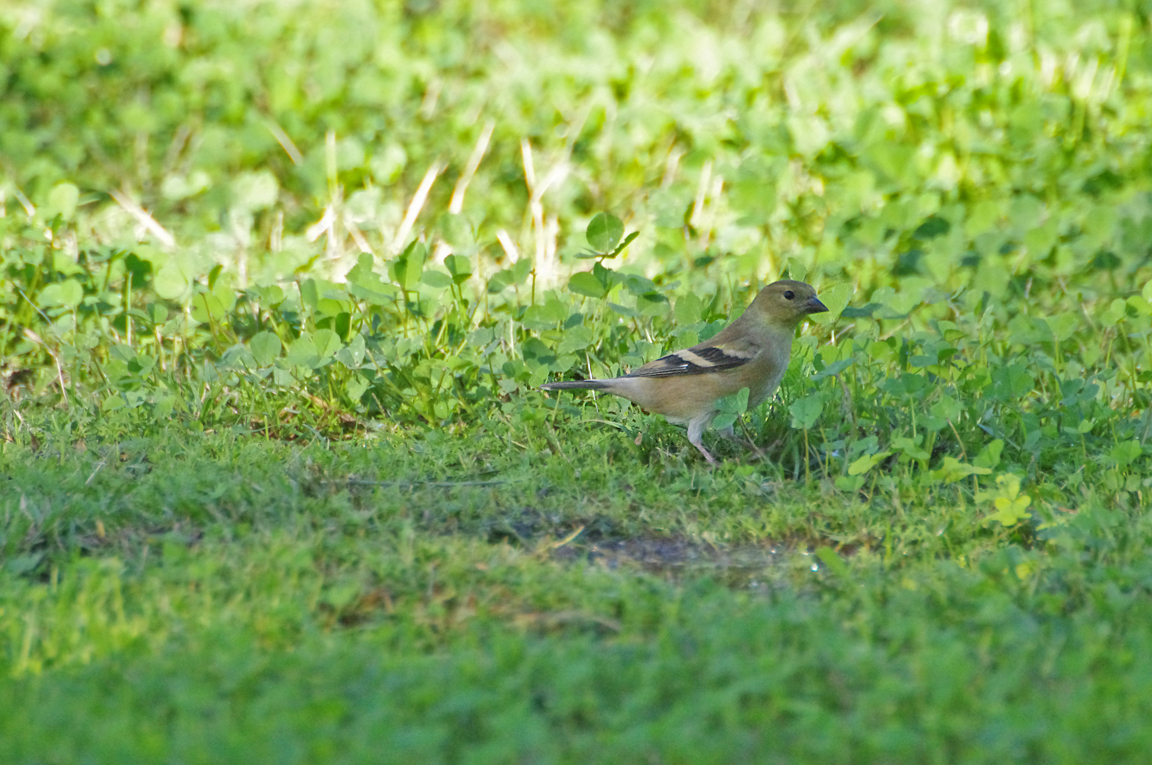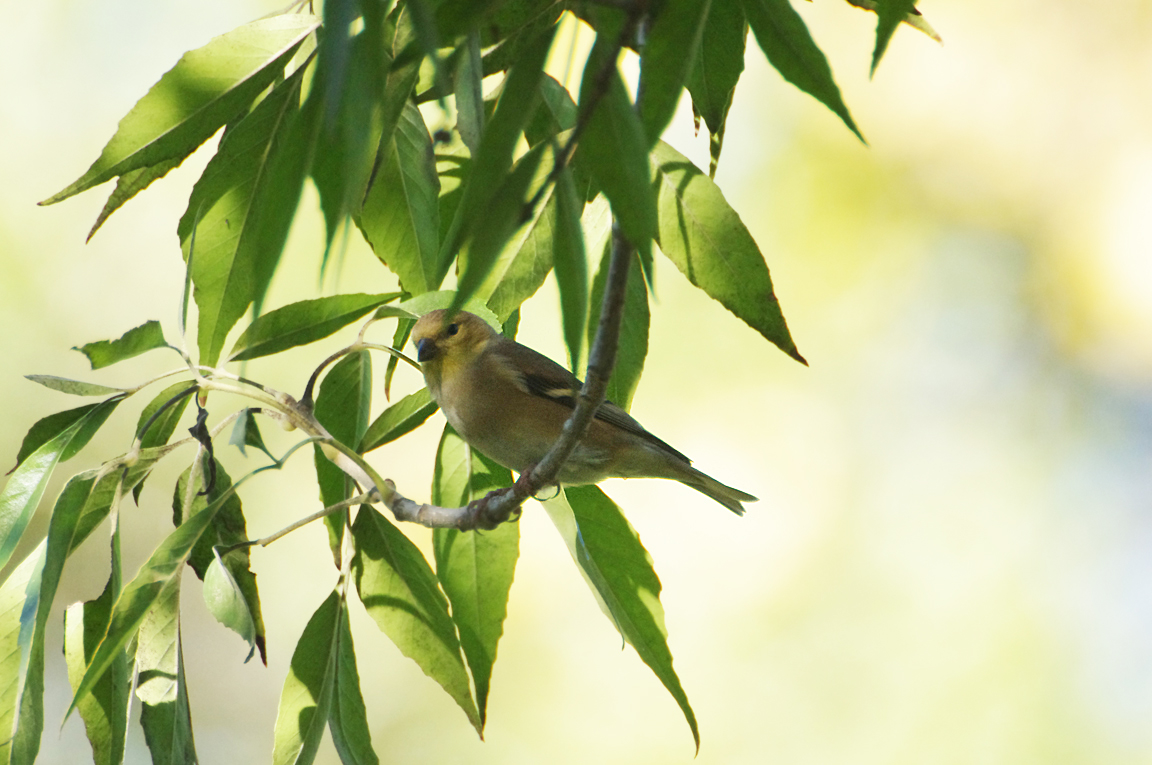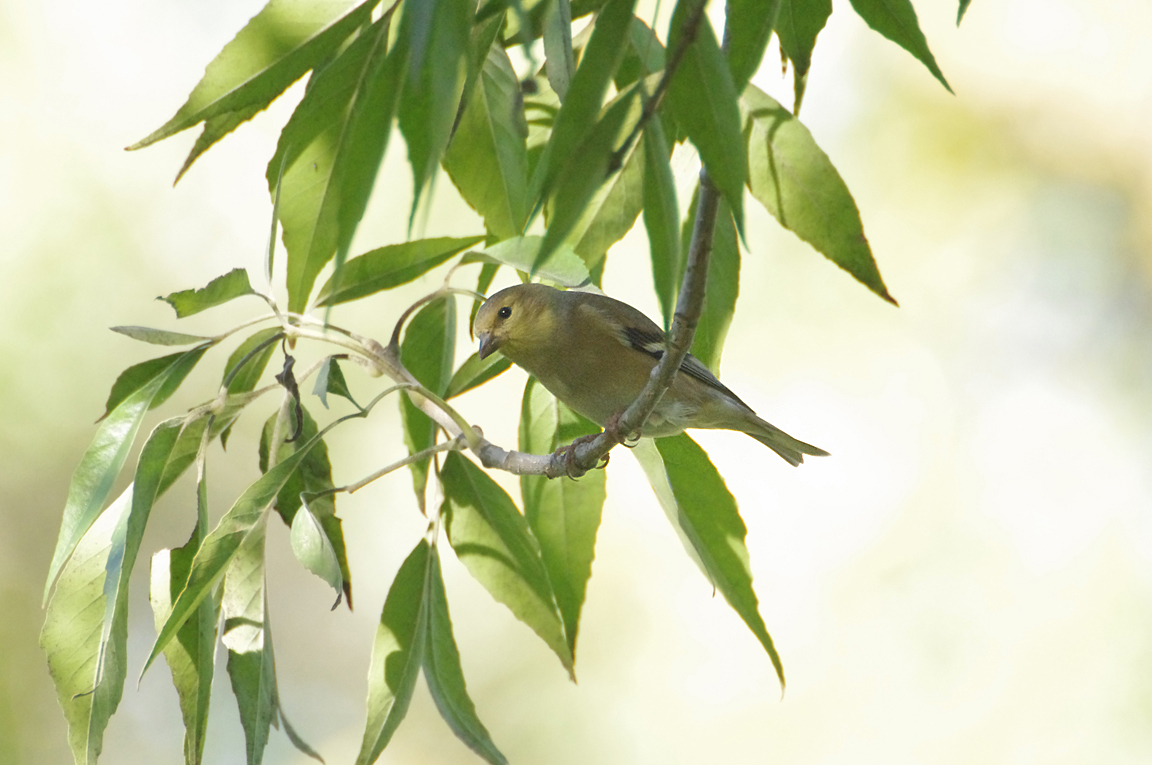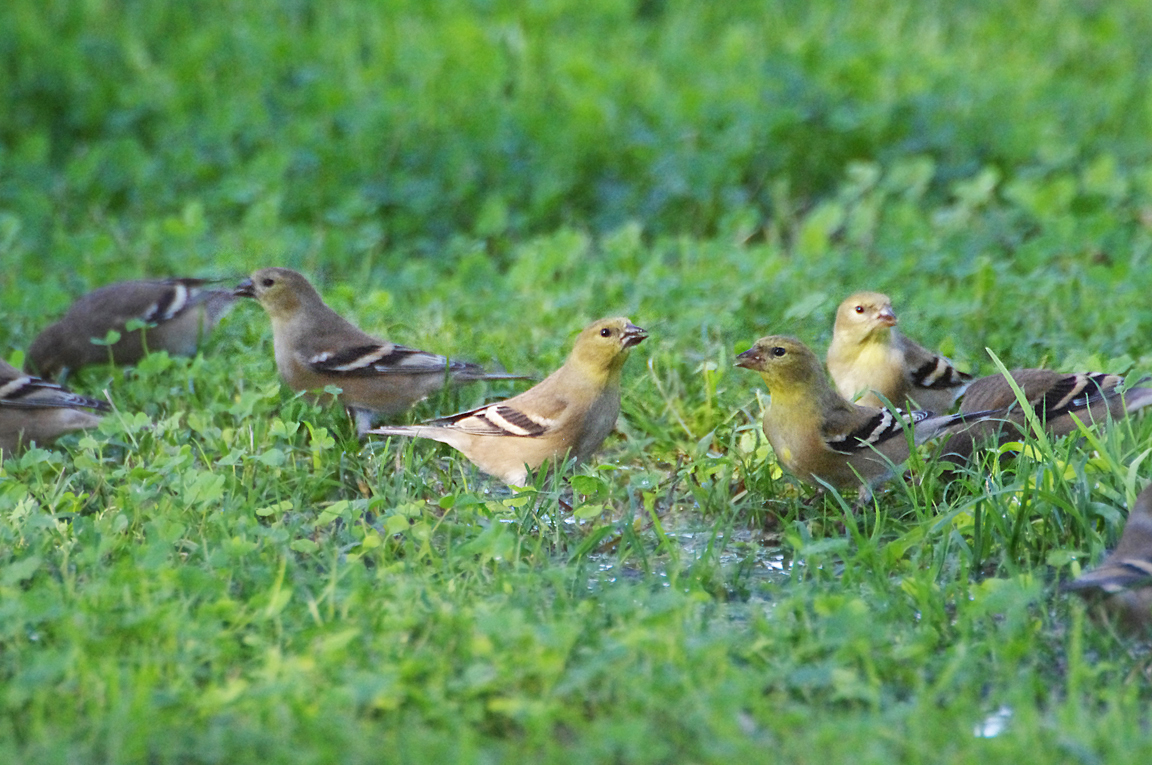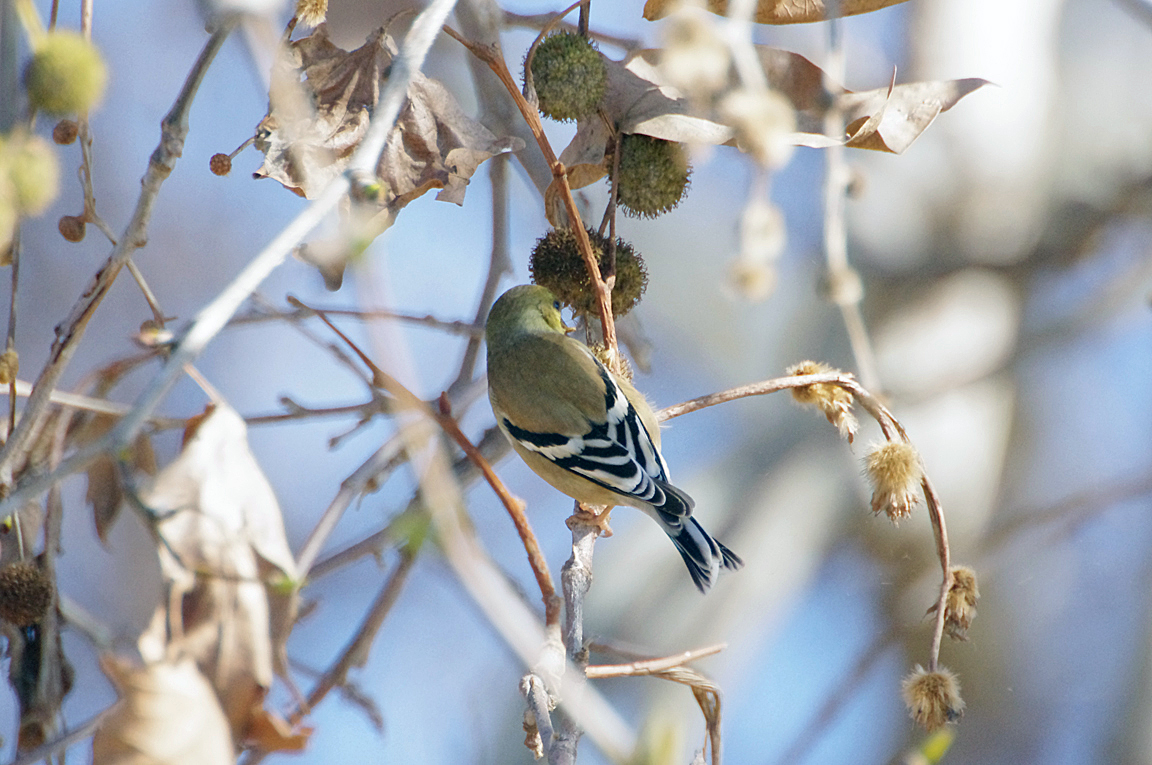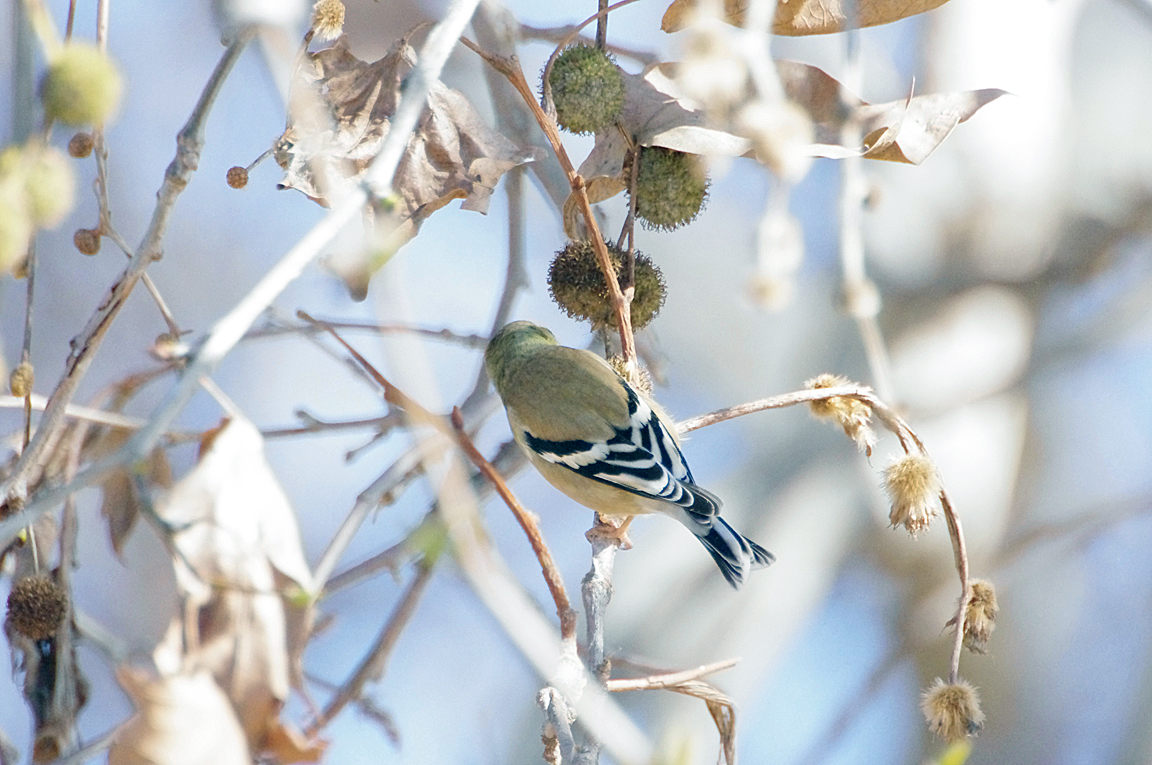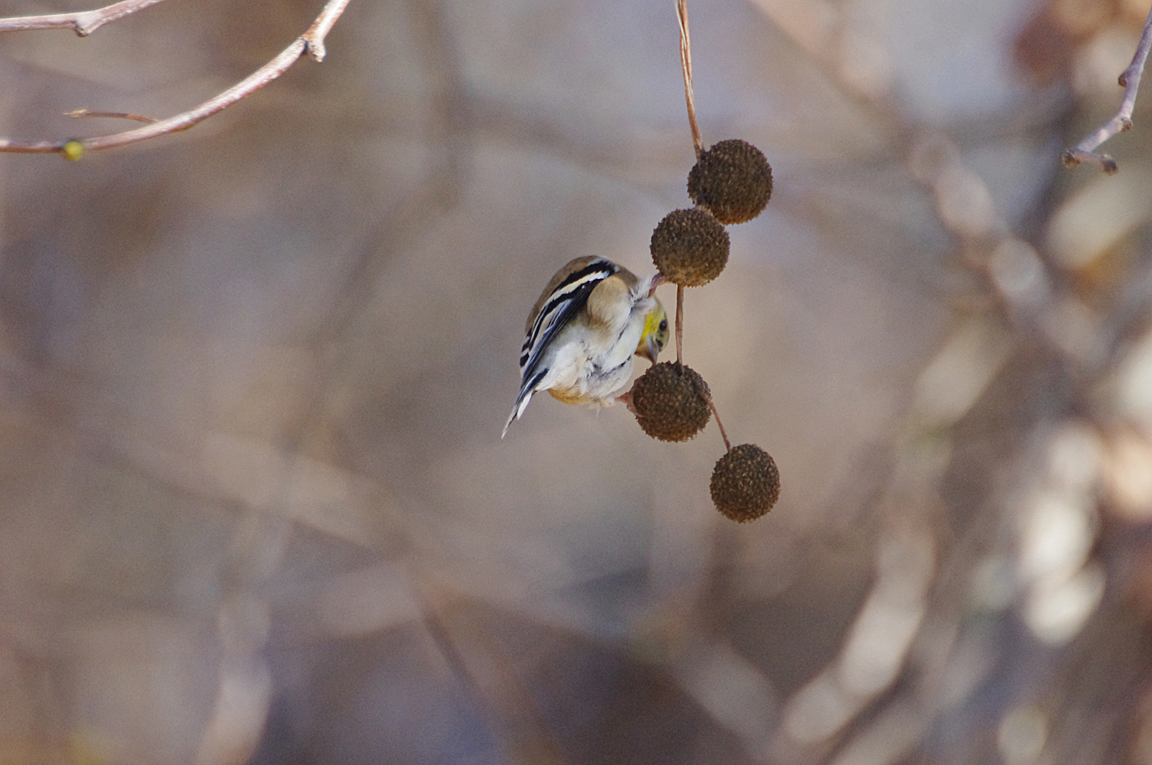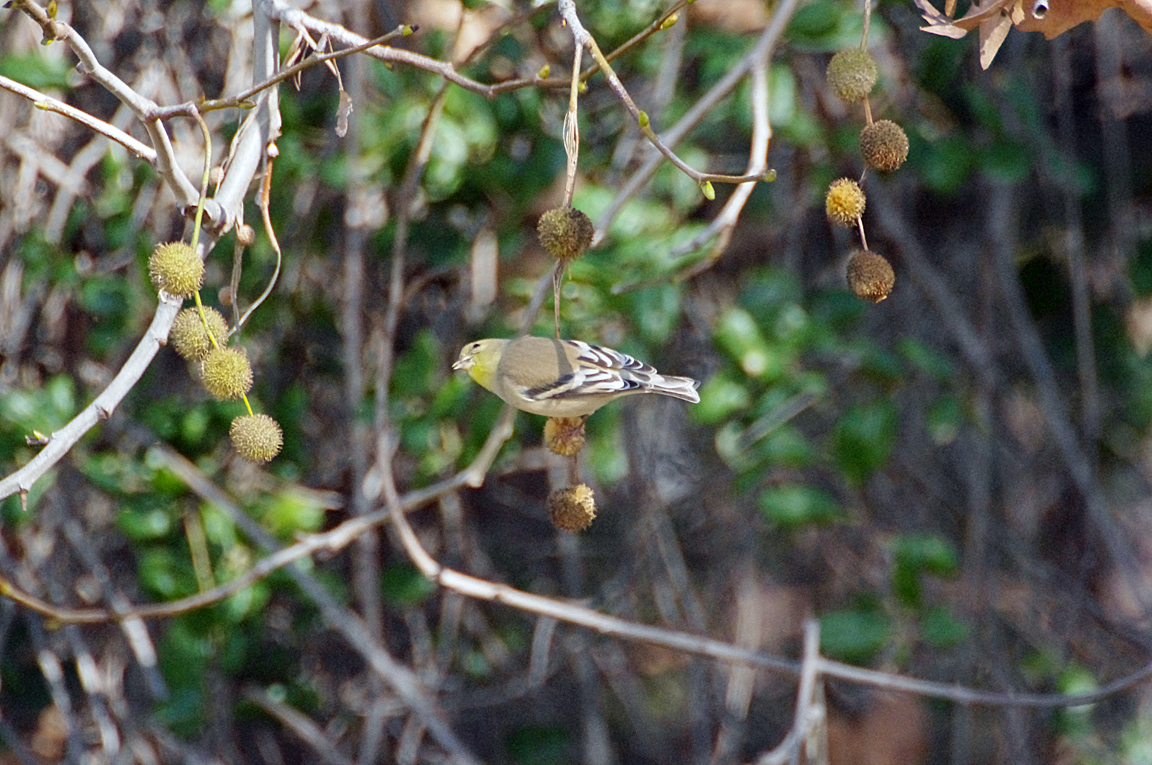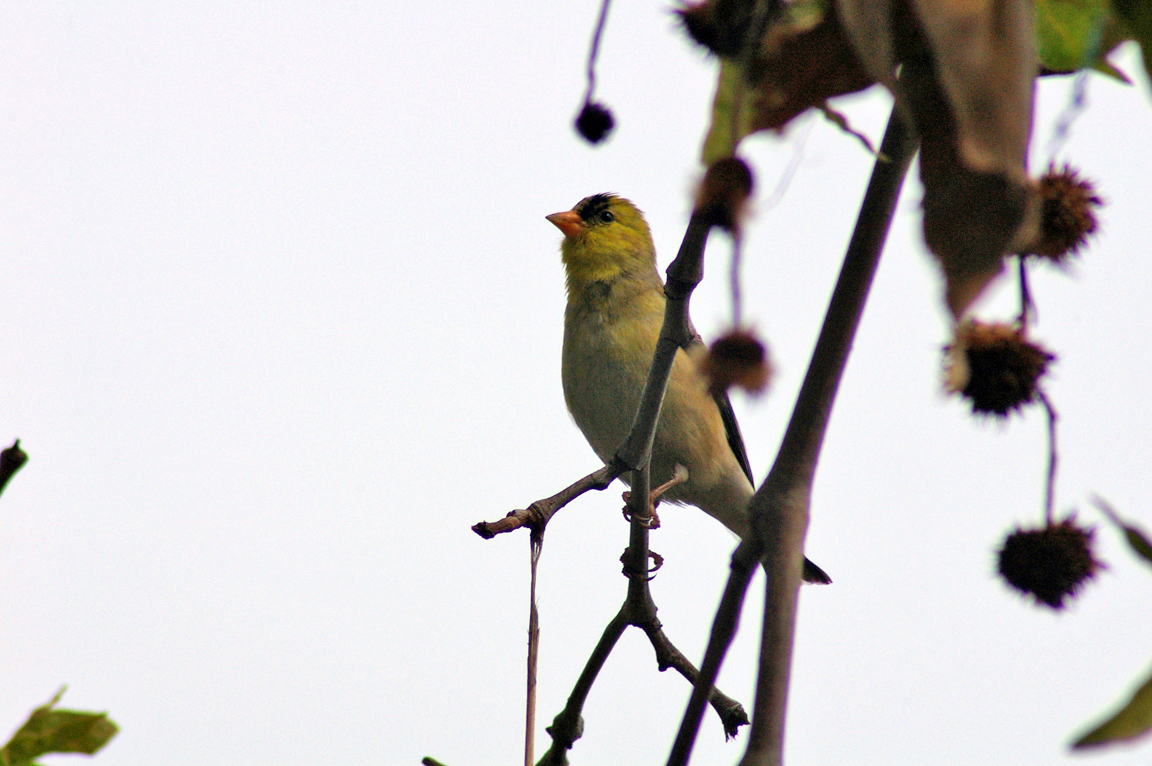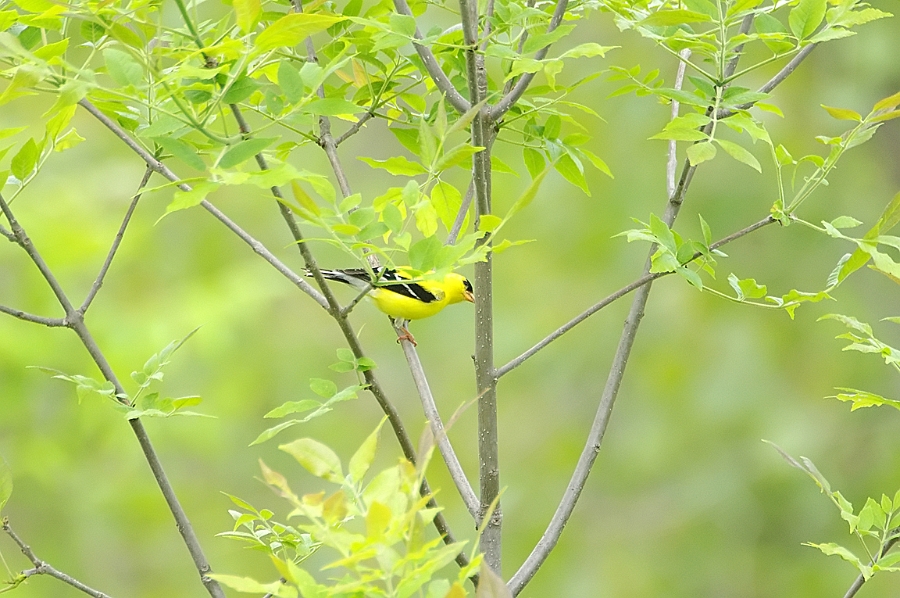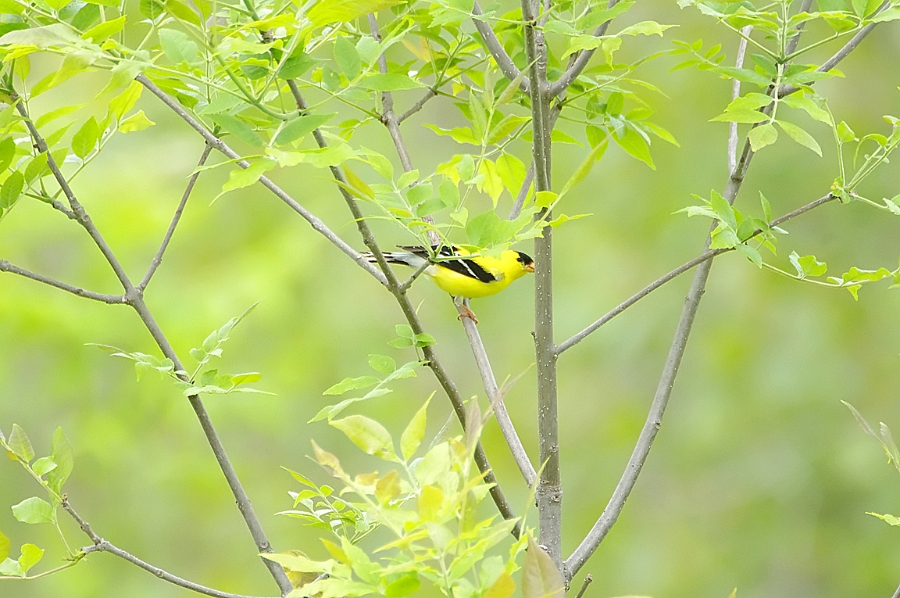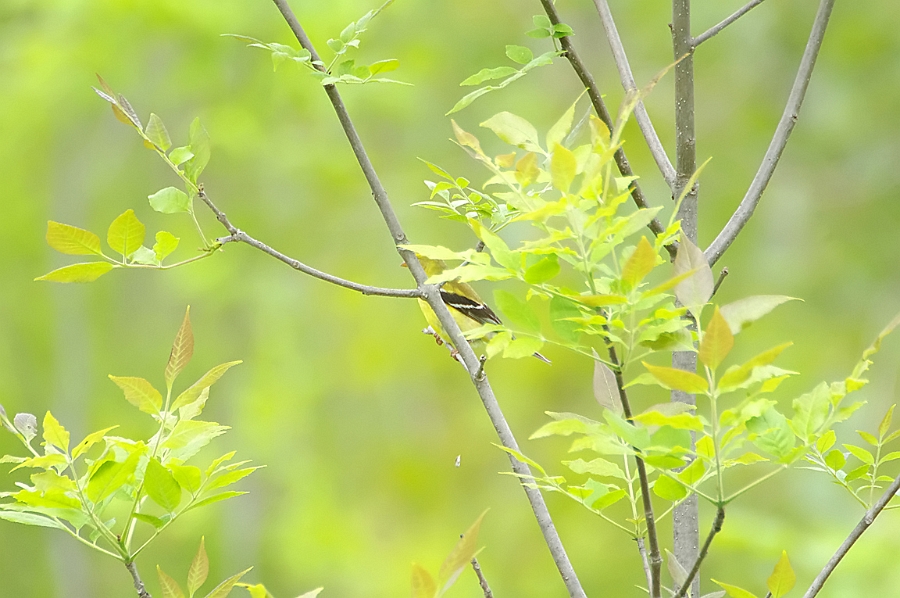|
|
|
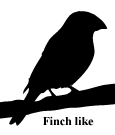 |
American Goldfinch
|
| Carduelis tristis | |
This handsome little finch, the state bird of New Jersey, Iowa, and Washington, is welcome and common at feeders, where it takes primarily sunflower and nyjer. Goldfinches often flock with Pine Siskins and Common Redpolls. Spring males are brilliant yellow and shiny black with a bit of white. Females and all winter birds are more dull but identifiable by their conical bill; pointed, notched tail; wingbars; and lack of streaking. During molts they look bizarrely patchy.
Interesting Information
-
American Goldfinches are the only finch that molts its body feathers twice a year, once in late winter and again in late summer. The brightening yellow of male goldfinches each spring is one welcome mark of approaching warm months.
-
American Goldfinches breed later than most North American birds. They wait to nest until June or July when milkweed, thistle, and other plants have produced their fibrous seeds, which goldfinches incorporate into their nests and also feed their young.
-
Goldfinches are among the strictest vegetarians in the bird world, selecting an entirely vegetable diet and only inadvertently swallowing an occasional insect.
-
When Brown-headed Cowbirds lay eggs in an American Goldfinch nest, the cowbird egg may hatch but the nestling seldom survives longer than three days. The cowbird chick simply can't survive on the all-seed diet that goldfinches feed their young.
-
Goldfinch's move south in winter following a pattern that seems to coincide with regions where the minimum January temperature is no colder than 0 degrees Fahrenheit on average.
-
As of May 2007, the oldest known American Goldfinch was 10 years 5 months old.
-
Paired-up goldfinches make virtually identical flight calls; goldfinches may be able to distinguish members of various pairs by these calls.
Description
Adult Description
Size & Shape
-
A small finch with a short, conical bill and a small, head, long wings, and short, notched tail.
-
Length Range: 13 cm (5 in)
-
Weight: 14 g (0.5 oz)
-
Size: Small (5 - 9 in)
Color Pattern
Adult males in spring and early summer are bright yellow with black forehead, black wings with white markings, and white patches both above and beneath the tail. Adult females are duller yellow beneath, olive above. Winter birds are drab, unstreaked brown, with blackish wings and two pale wingbars.
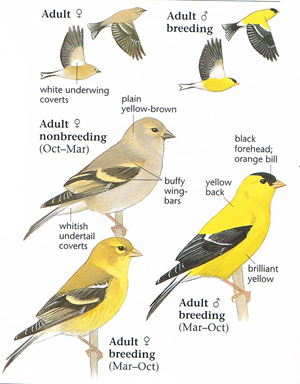
Photo taken from: The Sibley Field Guide by David Allen Sibley
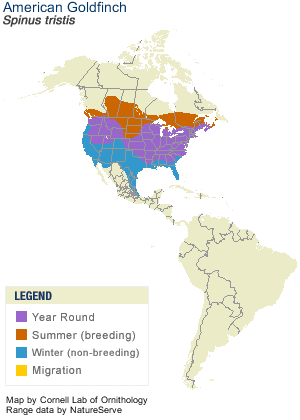
© 2003 Cornell Lab of Ornithology
|
Habitat |
|
Weedy fields, open floodplains, and other overgrown areas, particularly with sunflower, aster, and thistle plants for food and some shrubs and trees for nesting. Goldfinches are also common in suburbs, parks, and backyards. |
|
Behavior |
|
American Goldfinches are active, acrobatic finches that balance on the seedheads of thistles, dandelions, and other plants to pluck seeds. They have a bouncy flight during which they frequently make their po-ta-to-chip calls. Although males sing exuberantly during spring, pairs do not nest until mid-summer, when thistles and other weeds have gone to seed. Goldfinches do not join other songbirds mobbing predators. |
|
Food |
|
Goldfinches eat seeds almost exclusively. Main types include seeds from composite plants (in the family Asteraceae: sunflowers, thistle, asters, etc.), grasses, and trees such as alder, birch, western red cedar, and elm. At feeders prefers nyjer and sunflower. |
Taxonomy
| Kingdom: | Animalia |
| Phylum: | Chordata |
| Subphylum: | Vertebrata |
| Class: | Aves |
| Order: | Passeriformes |
| Family: | Fringillidae |
| Subfamily: | Carduelinae |
| Genus: | Carduelis |
| Species: | Carduelis tristis |
| Subspecies: | Carduelis tristis jewetti |
| Carduelis tristis pallida | |
| Carduelis tristis salicamans | |
| Carduelis tristis tristis |
Similar Species |
|
|
Bird Sound |
|
The American Goldfinch's most common call is its contact call, often given in flight. It sounds like the bird is quietly saying po-ta-to-chip with a very even cadence. |
|
Eggs look like this |
|
Photo taken from: ARCTOS Collaborative Collection Management Solution |
